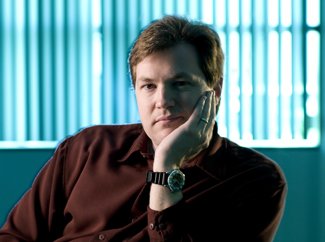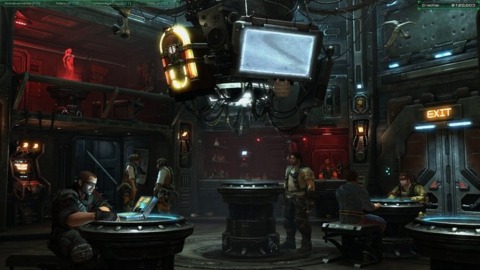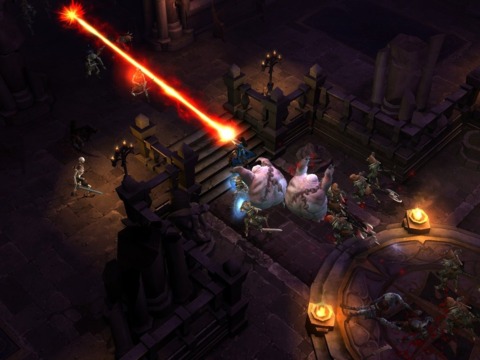Blizzard's Pardo serves up game design secret sauce
GDC 2010: Studio game design chief Rob Pardo lays out company's core game-making philosophies that drive high-quality hits.
Who was there: Blizzard Entertainment has a way of drawing crowds. As such, it came as no surprise that senior vice president of game design Rob Pardo drew more than a few spectators to his session at the 2010 Game Developers Conference. The gaming executive offered attendees a taste of Blizzard's secret sauce in his session, titled "Making a Standard (and Trying to Stick to It!): Blizzard Design Philosophies."

What he talked about: Pardo began his session by noting that designers can have many different values and still make high-quality games. However, considering Blizzard's history of creating some of the most highly regarded games in the industry, those on hand were more than eager to find out just what the studio finds particularly important. And of course, Pardo obliged.
Blizzard's first value is to put gameplay first. Pardo said that it never made sense to him when a game company would push its technology over gameplay. For Blizzard, all of the different disciplines within the company, from art and design to programming, focus on gameplay. He also cautioned that game design isn't more important than other disciplines, saying that a designer could come up with a really cool idea but the player experience could come out flawed.
Providing one example of how design can get in the way of gameplay, he brought up how in Warcraft III, druids could only be male night elves. However, when it came to World of Warcraft, it didn't make sense to exclude the profession to just one gender and race, so the lore had to be changed.
The second design philosophy was the concept of "easy to learn, difficult to master." Pardo said that Blizzard riffs a bit off of this maxim, changing it to "easy to learn, almost impossible to master." Since nearly all of Blizzard's games focus on multiplayer, he said that it is important to have extraordinary level of depth to accommodate hundreds of hours of gameplay.
The gaming executive went on to note that he couldn't grasp why many developers spend the bulk of their time crafting a 10-hour single-player campaign and then choose to tack on a multiplayer mode near the end of development. This makes no sense, he contended, considering a solid multiplayer mode could potentially last hundreds of hours.
As such, he said that the Starcraft II team had the game's multiplayer mode up and running two years before it started in on single-player content. Plus, it is far easier to balance single-player content after the multiplayer tuning had already been completed, he said.
The next design philosophy he addressed was called "What Is the Fantasy?" Here, Pardo said that it's important to match up the gameplay experience with what gamers expect, giving the example of the expectation of playing guitar with Guitar Hero or being a god-slayer as God of War's Kratos.

Pardo feels that Blizzard failed in this task with the original Starcraft, specifically when it came to hero units. By their nature, heroes should be the character that is the most powerful unit on the field who leads armies and can turn the tide of battle. In Starcraft, though, the hero units were fragile, especially in battles involving 50-plus units, so players ended up sheltering their heroes back at their base. He said this problem was fixed in Warcraft III, though, where the hero actually was the most powerful unit, and since battle sizes were smaller and the legendary fighters could resurrect, players used them as intended.
Moving on, Pardo brought up the point of making everything overpowered. He said that every unit and class should feel unstoppable, but the game should remain balanced if everything is done correctly. One way to do this, he said, is to celebrate the big differences between units, so that if you heavily ramp up one units attack, then you should do the same for another's defense.
Pardo contended that this concept extends to story as well as gameplay, saying that it doesn't take anything away from a game by making something "epic." He then gave the example of dragons in WOW, saying the original models were only about five times the size of characters. He had a developer make special in-game spells that could grow and shrink items by 10 percent and then spawned one of WOW's dragons on a secluded island. Pardo said he hit the grow spell about 20 times before he was happy, noting that to this day he's never actually used the shrink spell.
He then moved onto the idea of concentrated coolness. This concept, he said, involved distilling game elements to the most essential, best parts, rather than adding tons of features that complicate the issue. He said Blizzard failed at this with vehicles in WOW but succeeded in units for Starcraft.
Pardo's next design philosophy was a one-off of the old writer's adage "show don't tell," calling it "play don't tell." He said that gamers should play as much of the story as possible and the use of text, voice-overs, and movies should not be the primary vehicle for storytelling.

One of Blizzard's failures here, he said, came by way of quests in Diablo II. In that game, a quest giver would ramble on at length about what a player needed to do, when that task essentially was "go here and kill this thing." He said Blizzard got it right in Warcraft III with the Culling of Stratholme quest. Here, players were challenged to kill zombified villagers before Mal'Ganis could recruit them to his army.
Next, Pardo brought up the notion of "make it a bonus." He said that players respond far better to incentives than they do punishments, but game designers all too often go the punishment route first. Saying this concept ties heavily into player psychology, he brought up the example of how in its beta phase, WOW docked players experience gain once they had been online too long.
After vociferous objections, Pardo said that instead of reducing experience gain by 50 percent, he doubled the total experience measurement, upped normal gain to 200 percent, and made the drop off go to 100 percent. So while the aggregate gain was the same, the rebranding hit at the heart of player psychology, and they didn't have any problem with the system thereafter.
Pardo then shifted to the design philosophy of "control is king." Here, he said that designers will sometimes have to sacrifice a "cool" feature to make the game control better. He gave the example of how designers initially wanted a player's mount to enter the game Zelda-style, running in from the horizon. However, the team ultimately settled on a "poof" effect, as players demanded that when they summoned their mount, they wanted it then and there.
Under the design philosophy "tune it up," Pardo said that it's important to have a good grasp of who the game is being tuned for and why. He said that tuning a game fails the most when it designers fail to figure out who they are tuning for in advance.
Next, Pardo said that it's important to "avoid the grand reveal." Namely, he said that it's important for designers to check in often and early when showing their work to others so that they can receive vital feedback. Otherwise, if something is worked on in seclusion for too long, a developer will become too emotionally invested. Once they do finally show it, they are looking more for affirmation than constructive feedback.
Lastly, Pardo addressed what the company is perhaps best known for: its "culture of polish." The design executive said that Blizzard approaches the polish from the very beginning, as opposed to waiting until the game is basically done. He noted that even before a game is playable, Blizzard will polish what they have--even if it is just a layout on a white board.
He also brought up Blizzard's "strike teams," which comprise members of the company that aren't directly working on a project, as well as other outside sources. These teams are given play assignments to offer feedback, which breathes fresh air into what may be problematic with a certain component of the game. And, of course, Pardo concluded by saying that the polish process dictates that Blizzard doesn't ship a game "until it's done."
Quote: "If something happened in the past, it happened 10,000 years ago. What's the point of having someone 8 feet tall? Just go for it."--Rob Pardo, on how making everything overpowered extends to story, as well as gameplay.
Takeaway: Pardo was quick to note that while Blizzard's design philosophies work well for the company, they are by no means the only way to make a standout game. Instead, he said that it's important for all studios to take a long look at their own design philosophies so that they can have a good sense of how to make a cohesive game that is true to their own visions.
Got a news tip or want to contact us directly? Email news@gamespot.com
Join the conversation